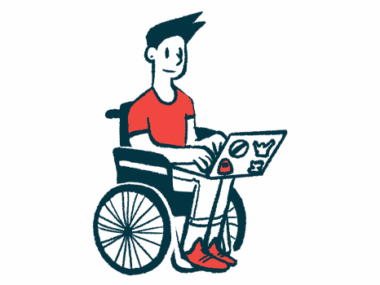Most SMA Patients Unaware of SMN2 Copy Number, Survey Says
Awareness of the number should come standard with diagnosis, researchers say
Written by |

Most people with spinal muscular atrophy (SMA) are unaware of their SMN2 copy number, and in a few cases, their type of SMA, according to a survey of Cure SMA members. Caregivers also may not know the number, the survey reported.
Because an SMN2 copy number can determine disease severity, early awareness of the SMN2 copy number is essential to inform SMA therapy decisions and optimize outcomes, researchers said.
Determination of an SMN2 copy number should become a standard part of patient diagnosis, they recommended.
The survey was published in the journal PLOS One in the study, “Knowledge of genetic test results among caregivers and individuals with spinal muscular atrophy.”
Most cases of SMA are caused by defects in the SMN1 gene, which impair the production of SMN protein. A lack of SMN protein leads to the progressive loss of motor neurons, the specialized nerve cells that control voluntary muscle movement. SMA is classified into subtypes based on the age of onset and the highest motor milestone achieved.
Disease severity is primarily dictated by the number of copies of the SMN2 gene, which encodes for a shortened version of SMN. Generally, the more SNM2 copies, the less severe the disease because some SMN protein production can partly compensate for the loss of SMN1-encoded SMN.
As a result, SMN2 copy number may offer an earlier and more accurate prediction of disease course. For patients and their caregivers, knowing the SMN2 copy number may allow them to be more knowledgeable about SMA and its outcomes.
However, whether all SMA patients know their SMN2 copy number was unclear.
The survey results
To find out, researchers at Cure SMA conducted a phone survey of SMA members (or caregivers) in their database who had no SMN2 copy numbers recorded, which comprised 87.7% of the database.
“Knowing a patient’s copy number also allows for more informed prognosis and enables patients and their caregivers to be active partners in SMA treatment,” the team noted.
The final sample included 803 respondents, the majority of whom were SMA caregivers (62.1%). Among the patients, 46.3% had SMA type 2, 24.8% had SMA type 1, 20.7% had SMA type 3, and 1.4% had SMA type 4. Half of the surveys were completed by a caregiver for a child or adolescent patient (up to 18 years).
About 25% of respondents or their loved ones were diagnosed without a genetic test, although 36% of these occurred after genetic testing became available.
Survey results revealed that over half of respondents (56.3%) did not know SMN2 copy numbers for themselves or their loved ones. Of these, 66 (8.2%) reported that genetic testing had not been done and 48.1% said they did not know because of other reasons, including having never being told.
Diagnosis occurred at a younger average age among those who knew their SMN2 copy number than those who did not (3.2 vs. 4.1 years). The mean current age was younger for affected individuals with a known copy number than those who did not know (18.7 vs. 24.1 years). A small group (4.4%) said they did not know their SMA subtype.
More patients who knew their copy number were engaged in the SMA community (52% to 58%), defined as participation in Cure SMA conferences and events, than those who did not know (about 38%). Residential location (urban or rural) was similar between those who did and did not know their copy number.
Disease severity and motor function
In general, fewer SMN2 copy numbers were related to worse disease severity. Most respondents with SMA type 1 (77.2%) had two SMN2 copies, while most type 2 patients (66.9%) had three copies, and 29% had four copies. Only 1.4% of patients with SMA type 2 and 5.3% of those with type 3 had five or more copies.
Motor function atypical for SMA type was found in a large proportion of respondents. Nearly a third of respondents (31%) with SMA type 1 were able to sit without assistance, 5.1% with type 2 could walk unassisted, and 4.6% with SMA type 1 could walk alone. Motor function, such as walking, was low for patients with one to three SMN2 copies, while the proportion of those with these abilities was markedly higher with four or five SMN2 copies.
“Regardless of these atypical functions by SMA type, motor function generally increased with increasing SMN2 copy number,” the researchers wrote.
Statistical analysis found younger age, more engagement with the Cure SMA community, and the ability to walk were significantly associated with a patient or caregiver knowing the SMN2 copy number. Knowing the copy number was also associated with a younger age of SMA-modifying therapy initiation.
The year of diagnosis, the use of SMA-modifying therapies, the relationship between respondent and patient, or the geographic location did not predict knowing the SMN2 copy number.
“The results of this survey demonstrate that most individuals with SMA are unaware of their SMN2 copy number, and in some cases, their type of SMA,” the researchers concluded. “Early awareness of SMN2 copy number is critical to inform SMA therapy decisions and optimize outcomes, and determination of SMN2 copy number should become a standard part of diagnosis.”







